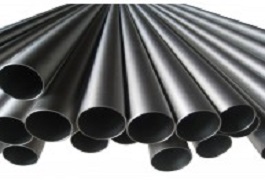Six Strategic Metals In Defense

Join Eric Smith at Stanford Advanced Materials as he examines the role of strategic metals in military and aerospace applications. In this session, he is accompanied by Dr Michael Lee, an expert in materials science. They discuss six metals that are required in defence technology. Their analysis is based on empirical data.
The metals covered are magnesium, titanium, rhenium, molybdenum, tungsten and uranium. They contribute to the performance of aircraft engines, rockets, nuclear reactors and military vehicles. Specific examples include a reduction in engine friction and improved heat resistance. The data reported are based on tests with controlled conditions.
If you require further details regarding strategic metals and their applications, please send an inquiry or connect with us on our social media channels using the link Send an inquiry.
Welcome back to another episode of Stanford Advanced Materials! I’m Eric Smith, and today we’re diving into the fascinating world of strategic metals that play a critical role in the military industry. Last time, we explored how cobalt is used in various industries, including EV batteries and everyday applications. Today, we’re shifting focus to six metals that are indispensable in defense and aerospace. Joining us is Dr. Michael Lee, an expert in materials science. Welcome, Dr. Lee!
Thanks, Eric! It’s great to be here to discuss these crucial materials.
Let’s start with magnesium, often referred to as the "defense metal." What makes magnesium so important in military applications?
Magnesium is prized for its light weight and strength. It’s used in everything from spacecraft to military aircraft and missiles. Its ability to produce high heat and light when burned also makes it ideal for flares and incendiary bombs.
That’s fascinating! Moving on to titanium—how is it utilized in the military?
Titanium alloys are known for their heat resistance and toughness. They’re used extensively in aircraft engines, rockets, and even in the latest military vehicles and armor. Its strength-to-weight ratio makes it a key material in aerospace applications.
Rhenium is another metal that’s critical, especially in aviation. Can you explain its significance?
Rhenium is essential for producing high-temperature components like engine blades and thermal shields in rockets and missiles. About 80% of the world’s rhenium is used in aviation, showcasing its importance in high-precision and high-temperature applications.
Let’s not forget molybdenum. How does this metal contribute to military technology?
Molybdenum is used in nonferrous alloys that are essential for manufacturing weapons and high-precision equipment. It’s also critical in building components for warships, rockets, and satellites, thanks to its strength and durability.
Tungsten, known as the "industrial tooth," also plays a significant role in defense. Can you tell us more?
Tungsten’s primary use is in hard alloys and special steels, which are vital for the defense industry. Its ability to withstand extreme conditions makes it indispensable in aerospace, defense, and even the information industry.
Finally, let’s talk about uranium. It’s a familiar name but has some specific military uses, right?
Yes, uranium, especially U-235, is crucial for nuclear reactors and weapons. While nuclear reactors require a lower concentration of U-235, nuclear weapons need at least 90% concentration. Uranium-238 is also used to produce plutonium for nuclear fuel.
That’s an impressive lineup of metals! Thanks, Dr. Lee, for breaking down these strategic materials and their military applications.
My pleasure, Eric. It’s always interesting to explore how these metals shape modern technology and defense.
To our listeners, thanks for tuning in to Stanford Advanced Materials! We hope you found today’s discussion insightful. Don’t forget to subscribe and join us next time for more deep dives into the world of materials science. Until then, stay curious and keep exploring!

 Bars
Bars
 Beads & Spheres
Beads & Spheres
 Bolts & Nuts
Bolts & Nuts
 Crucibles
Crucibles
 Discs
Discs
 Fibers & Fabrics
Fibers & Fabrics
 Films
Films
 Flake
Flake
 Foams
Foams
 Foil
Foil
 Granules
Granules
 Honeycombs
Honeycombs
 Ink
Ink
 Laminate
Laminate
 Lumps
Lumps
 Meshes
Meshes
 Metallised Film
Metallised Film
 Plate
Plate
 Powders
Powders
 Rod
Rod
 Sheets
Sheets
 Single Crystals
Single Crystals
 Sputtering Target
Sputtering Target
 Tubes
Tubes
 Washer
Washer
 Wires
Wires
 Converters & Calculators
Converters & Calculators
 Write for Us
Write for Us
